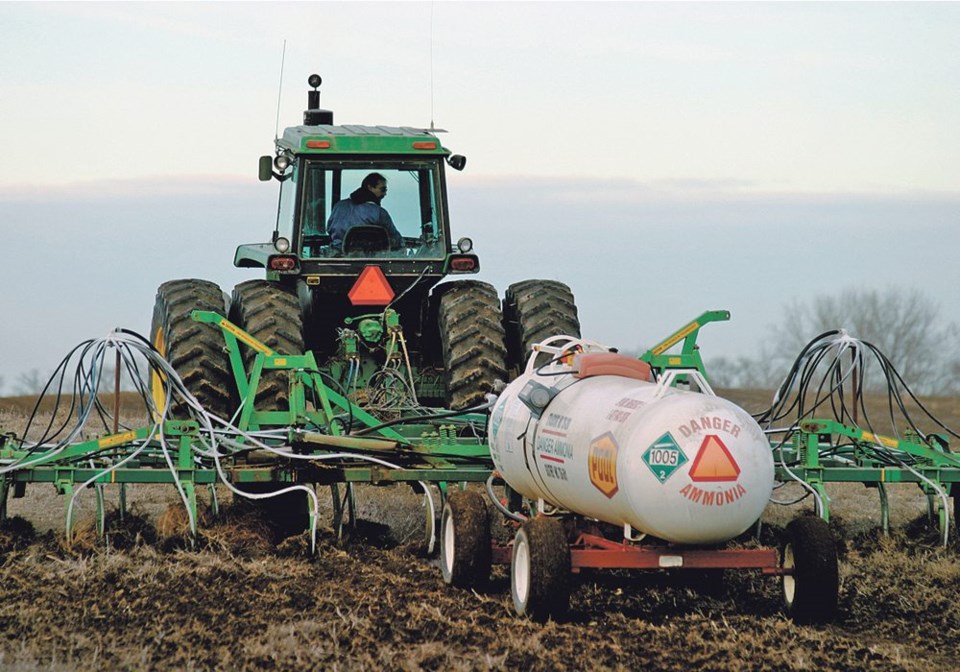WESTERN PRODUCER — Nitrogen fertilizer prices will remain well supported for the rest of this year and beyond, according to a major manufacturer and retailer of the product.
Raef Sully, executive vice-president of Nutrien, said global supply of ammonia, urea and UAN are all tight.
“I think we’ll see continued solid pricing through the rest of the year for all of those products,” he said in a Nutrien transcript of a conference call on the company’s first quarter 2022 financial results.
ully said ammonia consumption is growing at a clip of 2.5 million tonnes per year and the amount of new production coming online over the next two to three years is below that growth rate.
“So the market has been tightening (and) it continues to tighten,” he said.
“When you have shocks like the pricing we’re seeing in Europe and the unfortunate war in Ukraine, it compounds the issues.”
Nutrien interim president Ken Seitz said global supplies of key nitrogen fertilizer products are under pressure.
“Chinese urea exports have been restricted in the first half of 2022 and we believe there is potential for restrictions in the second half if the government intends on maintaining the current discount for Chinese domestic prices compared to other global markets,” he said.
China exported 300,000 tonnes of urea in the first quarter of 2022 and is expected to ship well under one million tonnes in the first half of the year compared to the average of two million tonnes.
The country usually exports more product in the second half of the year but there are signs that volumes may be down in that period as well due to further government restrictions, according to Nutrien’s chief economist Jason Newton.
“Historically, when exports have been restricted in the first half, we’ve seen a strong movement of volumes to bonded warehouses in advance of the export restrictions being removed,” he said.
“But we may not see that as much this year because there are export inspections in place that are purposely delaying the time it takes to move product into those warehouses.”
There is also reduced supply from Russia, which is the largest global exporter of nitrogen products.
The uncertainty of Russia’s natural gas supply is contributing to high and volatile natural gas prices in Europe, reducing nitrogen fertilizer production in that region.
Seitz estimated that about six million tonnes of European nitrogen fertilizer production was “offline” in the first quarter of 2022.
Mike Nash, senior editor of fertilizers at Argus Media, shared thoughts on Black Sea fertilizer during a recent webinar.
“With the exception of one or two markets, there is an expectation of increased availability of fertilizers coming out of Russia in the next few weeks and months,” he said.
However, he noted that Russian president Vladimir Putin recently warned of potential retaliatory measures against “unfriendly” countries, which could result in Russia blocking exports of raw materials or finished products.
Nash said nitrogen fertilizer demand has been lackluster in recent weeks due to delayed seeding in North America and the usual lull in Latin America where farmers are between seasons.
He noted the NOLA barge price for urea dropped $25 per tonne recently.
Sully said urea prices fell due to delayed seeding but he anticipates a rebound once the seed is in the ground.
“With crop pricing where it is, farmers are going to try and maximize yield here,” he said.
Contact [email protected]

